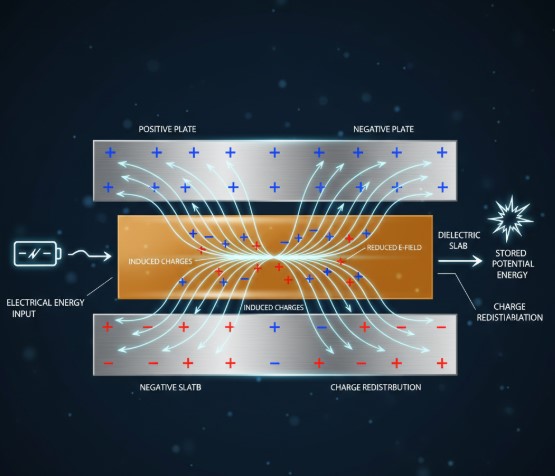Exploring crossfader curves? You’re in the right place! As DJs, we know that the right curve can make or break a mix. We will break down the formulas behind those curves, especially the “Dipped” one, which can add some real drama to your transitions. We’ll also touch on constant power, intermediate, and other fade/cut curves. Understanding these formulas will help you customize your setup for that perfect blend. Let’s get started!
Table of Contents
More from me
In the world of DJing, understanding crossfader curves is essential for smooth transitions between tracks. Different curves offer unique blending characteristics, catering to various mixing styles. This blog post will explore the formulas behind common crossfader curves, focusing on the “Dipped” curve and providing insights into others like Constant Power, Intermediate, and variations of Fade and Cut curves. Understanding these formulas allows DJs to fine-tune their software and hardware setups for optimal performance.
Understanding Crossfader Curves
Crossfader curves determine how the volume of two tracks changes as the crossfader moves from one side to the other. The x-axis represents the crossfader position (0 to 1), while the y-axis represents the volume level (0 to 1) for each track. The “Transition” curve, a simple linear fade, serves as a baseline. However, more complex curves like the Dipped curve offer nuanced control over the blend.
Different crossfader curves cater to different mixing styles. A sharp cut is ideal for quick transitions and scratching, while a gradual fade is better for seamless blending. The shape of the curve dictates how quickly or slowly the volume changes as the crossfader moves. Understanding these curves is essential for DJs to achieve the desired effect in their mixes.
The Dipped Crossfader Curve Formula
The Dipped curve creates a noticeable volume dip in the middle of the crossfade, often used to create a dramatic effect or to emphasize certain frequencies. One possible formula for the Dipped curve is based on a parabolic function. For one side of the curve (e.g., the left track), the formula can be expressed as ##y = (x-1)^2##. For the other side (the right track), the formula is ##y = x^2##. These parabolas create the characteristic dip in the middle.
This crossfader curves implementation ensures that as one track fades out following the curve ##y = (x-1)^2##, the other track fades in following ##y = x^2##. The result is a noticeable reduction in volume when the crossfader is near the center. It’s worth noting that variations exist, and other parabolic or even logarithmic functions could be used to achieve similar dipped effects, each with its own subtle nuances.
Constant Power Curves
Constant power curves aim to maintain a consistent perceived loudness throughout the crossfade. To achieve this, the curves must ensure that the sum of the squares of the volume levels for both tracks equals 1 at any given point. A common formula for a constant power curve is ##f(x) = cos(\frac{\pi}{2}x)##. This ensures that the power remains constant during the transition.
By using the crossfader curves formula ##f(x) = cos(\frac{\pi}{2}x)##, the perceived loudness remains relatively consistent. Variations can be achieved by modifying the input to the cosine function, such as ##f(x) = cos(\frac{\pi}{2}g(x))##, where ##g(x)## is a function that maps [0,1] to [0,1]. This allows for different constant power curves with varying fade/cut characteristics, all while maintaining a constant power output.
Intermediate and Transition Curves
The Intermediate curve, also known as a linear curve, provides a straightforward and even transition between tracks. The formulas are simple: ##y = x## for one track and ##y = 1 – x## for the other. This means that as one track’s volume increases linearly, the other track’s volume decreases linearly. It’s a balanced approach, suitable for many mixing scenarios.
Similar to the Intermediate curve, the Transition curve is also linear but may refer to a more general linear fade. These crossfader curves are easy to implement and provide a predictable result. While they lack the nuanced control of more complex curves, they are reliable and effective for basic transitions. The key is understanding the desired effect and choosing the curve that best achieves it.
Fade and Cut Curves
Fade and Cut curves offer different levels of sharpness in their transitions. Slow Fade curves provide a gradual volume change, while Fast Cut curves create an abrupt switch between tracks. These curves can often be represented using variations of power functions or cubic functions. For example, a cubic function shifted upwards can create a cut effect.
Experimenting with crossfader curves parameters like the exponent in a power function allows DJs to fine-tune the sharpness of the fade or cut. The goal is to find the right balance between a smooth transition and a defined switch. By adjusting these parameters, DJs can tailor the curves to match their specific mixing style and the genre of music they are playing.
Similar Problems and Quick Solutions
Problem 1: Linear Fade
Equation: ##y = x## and ##y = 1 – x##
Problem 2: Constant Power with g(x) = x^3
Equation: ##f(x) = cos(\frac{\pi}{2}x^3)##
Problem 3: Parabolic Dipped Curve
Equation: ##y = (x-1)^2## and ##y = x^2##
Problem 4: Sharp Cut using a Step Function
Equation: A step function that abruptly switches from 0 to 1.
Problem 5: Logarithmic Fade
Equation: ##y = log(x+1)## (normalized to [0,1])
| Curve Type | Formula (Track 1) | Formula (Track 2) | Description |
|---|---|---|---|
| Transition (Linear) | ##y = x## | ##y = 1 – x## | Simple linear fade between tracks. |
| Dipped | ##y = (x-1)^2## | ##y = x^2## | Creates a volume dip in the middle of the transition. |
| Constant Power | ##f(x) = cos(\frac{\pi}{2}x)## | ##f(1-x) = cos(\frac{\pi}{2}(1-x))## | Maintains consistent perceived loudness during the **crossfader curves** transition. |
| Slow Fade | ##f(x) = cos(\frac{\pi}{4}((2x-1)^{3}+1))## | ##f(1-x)## | Gradual volume change, smoother transition. |
| Fast Cut | ##f(x) = cos(\frac{\pi}{4}((2x-1)^{21}+1))## | ##f(1-x)## | Abrupt volume switch, suitable for quick cuts. |
We also Published
RESOURCES
- Does anyone use a smooth cross fader curve? : r/DJs
- XDJ-RR crossfading curve – Pioneer DJ
- XDJ-RX3 CrossFader Curves : r/PioneerDJ
- Crossfader Curve, Cut + Linear – djay Pro for Mac – Algoriddim …
- Scratching on a DJ Controller – DJ Tips & Tricks
- Linear cross fader level too low – djay for iPad – Algoriddim …
- algebra precalculus – Simple Formula for Curve of DJ Crossfader …
- Crossfader Curves & Scripts – VirtualDJ
- Octatrack crossfader curve settings – Octatrack – Elektronauts
- Implementing fader curves/crossfades using LUA – Grid – Intech Studio








0 Comments